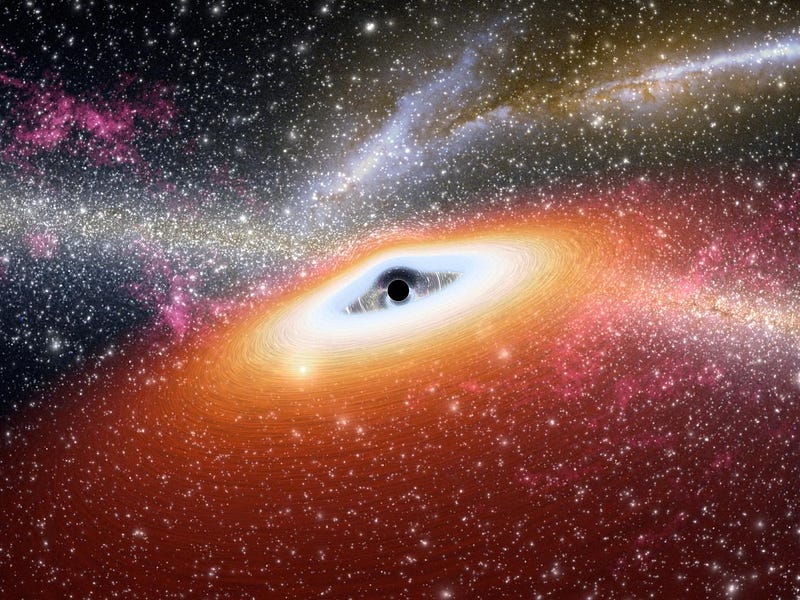Exploring the Secrets of Wandering Supermassive Black Holes
Written on
Chapter 1: The Nature of Wandering Supermassive Black Holes
Recent research suggests that wandering supermassive black holes (SMBHs) may be more common throughout the universe than previously estimated. These massive entities, which typically reside near the centers of galaxies, may be traversing the vast spaces between them.

At the heart of our Milky Way galaxy lies an SMBH, boasting a mass over four million times that of our Sun. This phenomenon is not unique; similar black holes are present in nearly every galaxy. Over time, these SMBHs grow by consuming enormous amounts of stars, gas, and dust, before entering prolonged periods of dormancy. This cycle can repeat, occasionally disrupted by massive galactic collisions.
Section 1.1: The Wanderers
While most SMBHs maintain stability within their galaxies, a select few are displaced from their origins, transforming into wanderers. These nomadic black holes drift silently through the cosmos, consuming anything that crosses their path.

Black holes, by their nature, are invisible; however, the material they attract can emit electromagnetic radiation, revealing their presence. Identifying black holes can be likened to locating an unseen Cookie Monster based solely on the cookie crumbs left behind. The more "cookies" consumed, the more visible they become, allowing for an estimation of how many are being devoured.
Section 1.2: Simulating the Cosmos
New simulations have provided astronomers with valuable insights into the distribution of wandering supermassive black holes across the universe and potential locations where they may exist.
Utilizing the Romulus model for cosmological simulations, a team of researchers led by Angelo Ricarte from the Harvard & Smithsonian Center for Astrophysics has modeled pairs of SMBHs. This research allowed them to estimate how many remain within their galaxies and how many venture into the vastness of space. According to their findings, many supermassive black hole binaries emerge after billions of years of orbital evolution, while some SMBHs may never reach their galactic centers.
Chapter 2: The Cosmic Landscape
Around two billion years after the Big Bang, wandering black holes were found to be more prevalent and even outshone their counterparts residing in galaxies. Current research indicates that thousands of these wandering black holes exist within the halos of galaxy clusters. However, detecting them can be challenging since many may not be actively "feeding," rendering them difficult to identify.
So, if you're feeling a bit overwhelmed by the universe's mysteries, take solace in the fact that wandering supermassive black holes are indeed a reality.
James Maynard, the founder and publisher of The Cosmic Companion, is a New England native now living in Tucson with his wife Nicole and their cat, Max.
Did you enjoy this article? Subscribe to receive every piece by email on Medium! Join us on The Cosmic Companion Network for our podcast, weekly video series, informative newsletter, and news briefings on Amazon Alexa!